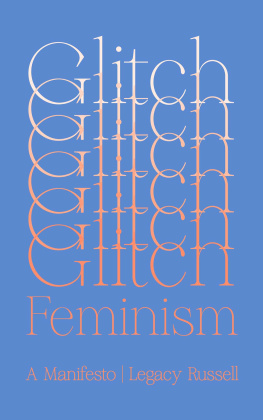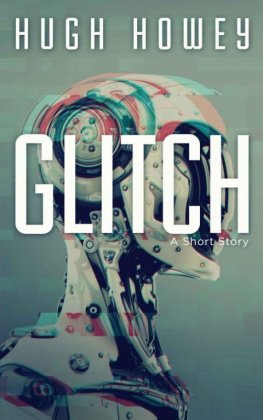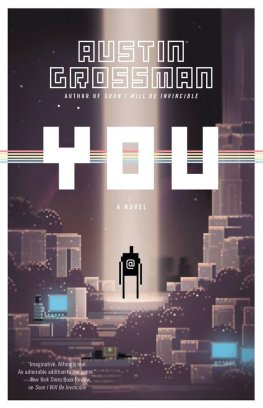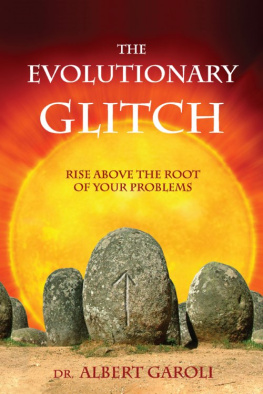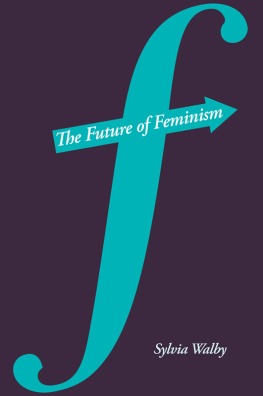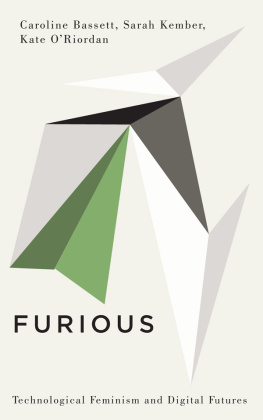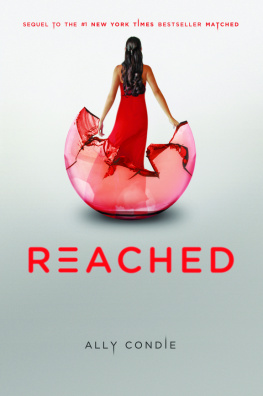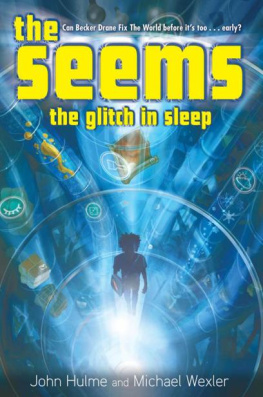Contents

GLITCH
FEMINISM
GLITCH
FEMINISM
A Manifesto
LEGACY RUSSELL

First published by Verso 2020
Legacy Russell 2020
All rights reserved
The moral rights of the author have been asserted
1 3 5 7 9 10 8 6 4 2
Verso
UK: 6 Meard Street, London W1F 0EG
US: 20 Jay Street, Suite 1010, Brooklyn, NY 11201
versobooks.com
Verso is the imprint of New Left Books ISBN-13: 978-1-78663-266-1
ISBN-13: 978-1-78663-268-5 (UK EBK)
ISBN-13: 978-1-78663-269-2 (US EBK)
British Library Cataloguing in Publication Data
A catalogue record for this book is available from the British Library
Library of Congress Cataloging-in-Publication Data
A catalog record for this book is available from the Library of Congress
Cover design by Elizabeth Karp-Evans (Pacific)
Typeset in Sabon by Biblichor Ltd, Edinburgh
Printed and bound by CPI Group (UK) Ltd, Croydon CR0 4YY
For DIGITALMAN, who:
001Loved me and my avatar.
002Championed journeying along this gorgeous loop.
003Died before this was born[e],
but who birthed me, and for that, birthed this, too.
Still processing, you live here, in these pages, with us all.
O, dear one weve lost, but who lives on, online.
For you, we write your name here, and occupy this space.
_______________________
Say their name.
Say their name.
Say their name.
fuck
the whole muthafucking thing
Etheridge Knight, Feeling Fucked Up, 1986
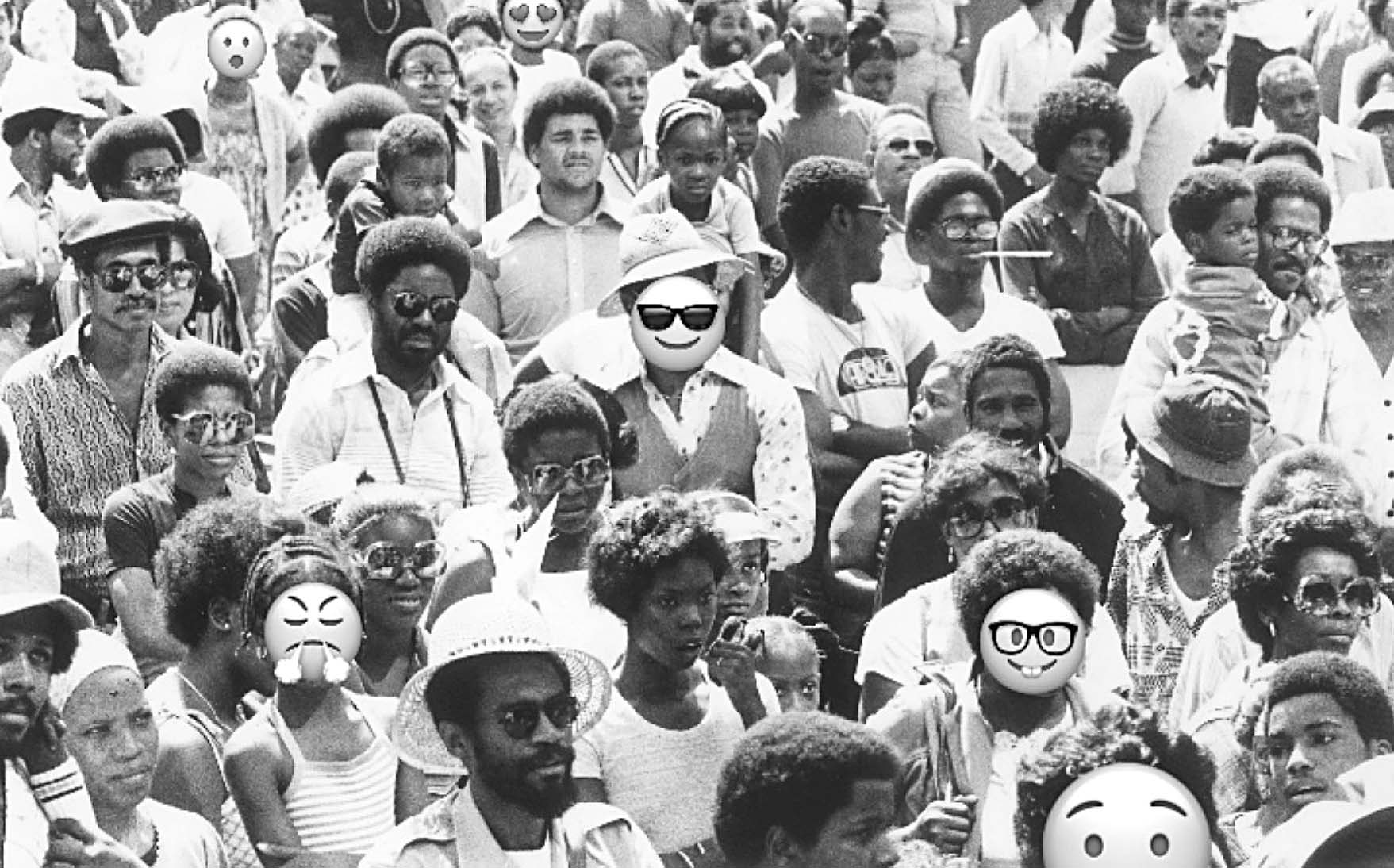
Contents
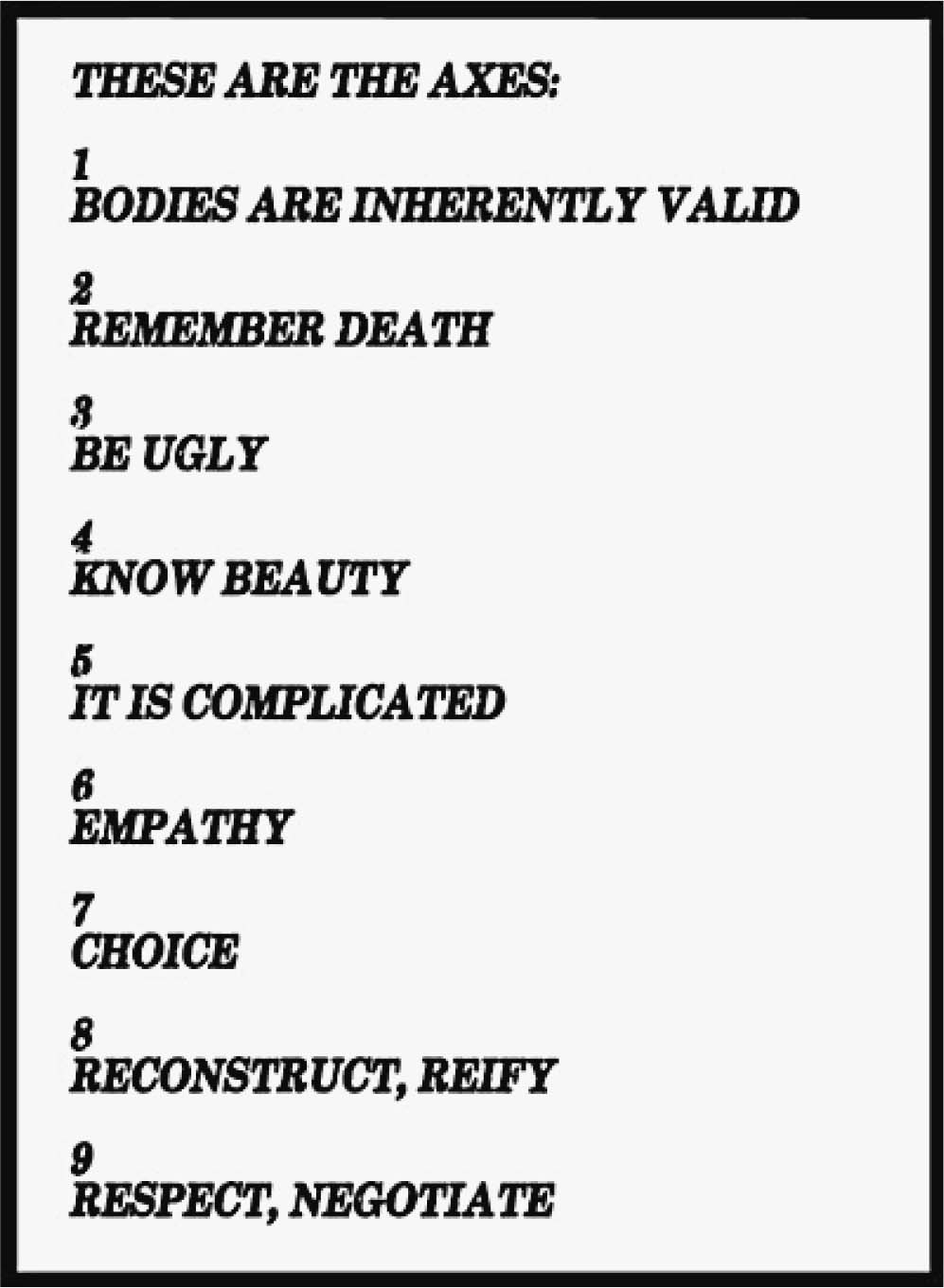
Mark Aguhar, These Are the Axes, 2012
As a tweenager I logged on as LuvPunk12 and spent the following years wandering the highways of haunted machinery, occupying chat rooms and building GeoCities GIF fantasies. Growing up on Saint Marks Place in the center of the East Village I learned how to construct and perform my gendered self from the punk kids I met on my stoop, from the drag queens who took the stage at Stingy Lulus and dominated yearly at Wigstock in Tompkins Square Park, as well as from the Boricua culture, all of which was, at the time, part of the bedrock of the East Village and Lower East Side.
LuvPunk12 became a symbolic amalgam of all this flow. I chose the name when I spotted LUV PUNK! on a candy-apple-red heart-shaped sticker adhered to a phone booth outside of my apartment building. I was twelve. I peeled it off and stuck it to my Trapper Keeper, wearing it as a badge of pride. It became a rooted reminder of home as I transitioned in and out of spaces beyond the East Village that often felt alienating to me.
LuvPunk12 as a chatroom handle was a nascent performance, an exploration of a future self. I was a young body: Black, female-identifying, femme, queer. There was no pressing pause, no reprieve; the world around me never let me forget these identifiers. Yet online I could be whatever I wanted. And so my twelve-year-old self became sixteen, became twenty, became seventy. I aged. I died. Through this storytelling and shapeshifting, I was resurrected. I claimed my range. Online I found my first connection to the gendered swagger of ascendancy, the thirsty drag of aspiration. My female transmogrified, I set out to explore man, to expand woman. I toyed with power dynamics, exchanging with other faceless strangers, empowered via creating new selves, slipping in and out of digital skins, celebrating in the new rituals of cybersex. In chatrooms I donned different corpo-realities while the rainbow wheel of death buffered in the ecstatic, dawdling jam of AOL dial-up.
Those dulcet tones of dial-up were Pavlovian: they made me salivate in anticipation of the worlds that lay just beyond the bells. I was a digital native pushing through those cybernated landscapes with a dawning awareness, a shyly exercised power. I was not yet privileged enough to be fully formed as cyborg but, in reaching, surely on my way.
And I was not alone.
Away from the keyboard (or AFK), immersed in a rapidly gentrifying East Village, faces, skin, identities like my own and like the mixed communities I had been brought up in were slowly disappearing. I was becoming a stranger in my own territory, a remnant of a past chapter of New York. Creative families of color like mine who had built the vibrant landscape of downtown New York were being priced out of the neighborhoods. Suddenly those living next door were increasingly white, upwardly mobile, and made visibly uncomfortable by my presence and the presence of my family. The old guard were coming up against a generation of trust-fund children. These new arrivals were intrigued by the mythology of the East Village as a cultural bastion yet displayed little interest in investing in the necessary fight to protect its legacy.
Beyond my doorstep, my queer femininity found itself, too, in a vulnerable passage through channels of middle school heteronormativity. My prepubescent body was exhausted by social mores, tired of being told to take up less space, being seen and not heard, systematically erased, edited out, ignored. All I wanted to do was move. But in the light of daytime, I felt trapped, always shifting uneasily under the weight of incessant white heteronormative observation.
Under this sort of surveillance, real innocence and childhood play seems suddenly unviable. Instead I searched for opportunities to immerse myself in the potential of refusal. I commenced to push back against the violence of this unconsented visibility, to take control of the eyes on me and how they interpreted my body. It was clear to me, as I stood at a volatile intersection, that the binary was some kind of fiction. Even for a fledgling queer Black body, a DuBoisian double-consciousness splinters further, double becoming triple, consciousness amplified and expanded by the third eye of gender.
Looking through these veils of race and gender but never being fully seen myself, with limited reference points in the world beyond, I was distanced from any accurate mirror. For my body, then, subversion came via digital remix, searching for those sites of experimentation where I could explore my true self, open and ready to be read by those who spoke my language. Online, I sought to become a fugitive from the mainstream, unwilling to accept its limited definition of bodies like my own. What the world AFK offered was not enough. I wanteddemandedmore.
The construct of gender binary is, and has always been, precarious. Aggressively contingent, it is an immaterial invention that in its toxic virality has infected our social and cultural narratives. To exist within a binary system one must assume that our selves are unchangeable, that how we are read in the world must be chosen for us, rather than for us to defineand choosefor ourselves. To be at the intersection of female-identifying, queer, and Black is to find oneself at an integral apex. Each of these components is a key technology in and of itself. Alone and together, female, queer, Black as a survival strategy demand the creation of their individual machinery, that innovates, builds, resists. With physical movement often restricted, female-identifying people, queer people, Black people invent ways to create space through rupture. Here, in that disruption, with our collective congregation at that trippy and trip-wired crossroad of gender, race, and sexuality, one finds the power of the glitch.

